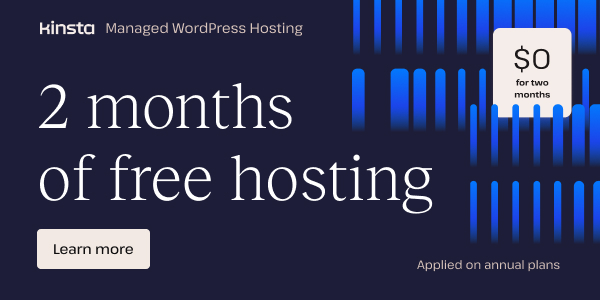
Understanding the Crucial Role of Website Speed in User Satisfaction and Search Rankings
In today’s fast-paced digital world, website speed is no longer just a technical nicety—it’s a foundational pillar for success online. Whether you’re running an e-commerce store, a corporate site, or a personal blog, how quickly your pages load dramatically shapes user experience, conversion rates, and search engine rankings. This post dives deep into why website speed matters, how it impacts SEO, and what actionable strategies you can deploy to optimize performance effectively.
The Link Between Website Speed and User Experience
Users expect swift, seamless interactions on the web. Research shows that 47% of consumers anticipate a web page to load in 2 seconds or less, and 40% will abandon a site if it takes more than 3 seconds to load. Such impatience has a direct impact on a website’s bounce rates and conversion potential. For example, Amazon discovered that a mere 100-millisecond delay in page load time caused a 1% drop in sales, while Walmart saw conversions improve by 2% for every one-second speed gain.
Faster websites not only delight visitors but also foster greater engagement, longer sessions, and a positive perception of your brand’s professionalism and reliability. This is particularly vital for mobile users, who often experience slower network speeds and are less tolerant of delays; in fact, Google research reveals that 53% of mobile users abandon a site if it loads slower than three seconds.
How Website Speed Influences SEO Rankings
Website speed is a direct ranking factor in Google’s search algorithm. Google’s Speed Update prioritizes fast-loading sites, meaning slow websites struggle to climb search engine result pages (SERPs). Optimizing your site’s loading times can improve your organic visibility, making it easier for users to discover your content.
Page speed also affects SEO indirectly through user engagement metrics. If visitors quickly leave your site due to slow performance (a high bounce rate), search engines interpret this as a poor user experience and reduce your rankings accordingly. Therefore, website speed acts as both a technical and behavioral signal in Google’s evaluation of your site.
Effective Strategies for Performance Optimization
Choosing the Right Web Hosting Provider
The foundation of a fast website often begins with your hosting provider. A high-quality host can drastically reduce server response times, support advanced caching methods, and maintain consistent uptime. We at Belov Digital recommend Kinsta for managed WordPress hosting because of their cutting-edge Google Cloud infrastructure and performance optimizations tailored for speed.
Implementing Caching and Content Delivery Networks (CDNs)
Caching stores copies of your pages so they load instantly for repeat visitors. Pair this with a Content Delivery Network (CDN) like Cloudflare, which distributes your content globally, drastically reducing load times for users around the world.
Image Optimization and Lazy Loading
Heavy images are common culprits for slow-loading pages. By compressing images without sacrificing quality and using modern formats such as WebP, you reduce file sizes. Furthermore, lazy loading ensures images only load when they enter the viewport, saving bandwidth and speeding up initial page render.
Minification and Asynchronous Loading of Scripts
Removing unnecessary spaces and comments in your CSS, JavaScript, and HTML files (minification) alongside asynchronous loading prevents scripts from blocking page rendering. These steps contribute to faster content delivery and improve the critical rendering path.
Prioritizing Mobile Speed Optimization
Given that mobile devices account for a significant portion of web traffic, optimizing for mobile speed is essential. Google’s PageSpeed Insights tool provides valuable reports and tailored suggestions to help improve mobile performance.
Real-World Success Stories
Let’s consider the experience of a client site we optimized recently at Belov Digital Agency. By migrating their website to Kinsta’s managed hosting, integrating Cloudflare CDN, and compressing heavy image assets, the site’s average load time went from 7 seconds down to 2.5 seconds. This improvement led to a 30% reduction in bounce rate and a noticeable increase in organic traffic within three months, underscoring the intertwined benefits of speed, UX, and SEO.
Measuring and Monitoring Performance Continuously
Optimizing website speed is not a one-time task. Tools like GTmetrix, Google PageSpeed Insights, and WebPageTest allow you to regularly audit your site’s performance and identify new bottlenecks as you add fresh content or features.
For ecommerce and larger websites, performance monitoring platforms like Dynatrace provide real-time insights into speed and user experience metrics, enabling proactive optimization to keep your website competitive.
Additional Resources
- Moz’s Guide to Page Speed & SEO
- Search Engine Journal: How Site Speed Impacts SEO
- Google Web Fundamentals – Performance
Final Thoughts on Website Speed, User Experience, and SEO
Website speed is a critical factor that directly affects user satisfaction, search engine rankings, and ultimately business success online. Investing in performance optimization techniques—such as selecting superior hosting, leveraging CDNs, optimizing images, and fine-tuning code—delivers tangible benefits including increased user engagement, higher conversion rates, and better organic visibility.
Your website’s speed should be an ongoing priority. For expert assistance, Contact Us at Belov Digital Agency to explore tailored strategies that ensure your digital presence performs at its best.













